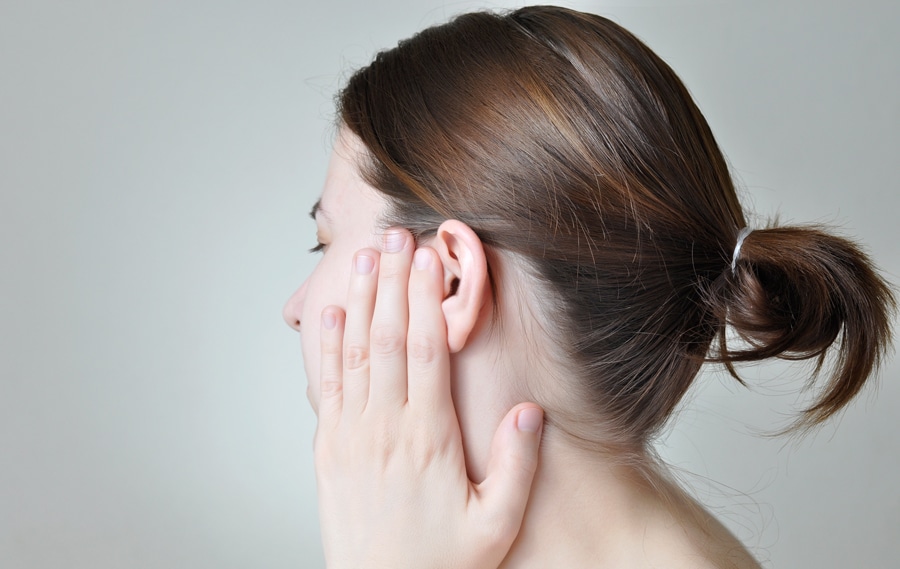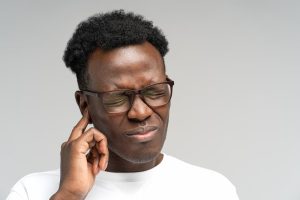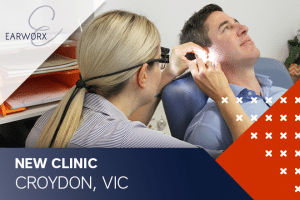Impacted earwax is where wax accumulates in the ear canal to the point where it causes symptoms, prevents needed assessment of the ear, or both. Whilst often not an issue, blockage of the ear related to wax build up can lead to a host of unwanted symptoms.
What is Earwax?
Earwax is a naturally occurring substance that cleans, protects and lubricates our ear canals. It prevents dust and other debris from moving further down the ear canal, and also deters insects through its bitter taste.
Normally, earwax is carried out of the ear via a self cleaning mechanism; the skin layer lining the eardrum and canal migrates out of the ear much like a conveyer belt, carrying the wax with it. This, combined with movement of the soft outer part of the ear through chewing and talking allows the wax to either fall out of the ear, or be wiped away as it reaches the external ear. For a variety of reasons, this self-cleaning method can be disrupted, and this is where the wax can become impacted and hence problematic.
Causes of Impacted Earwax?
Blockages or impactions occur more commonly in the elderly and developmentally delayed, but the issue is also high in healthy adults and children, with 1 in 10 children and 1 in 20 adults suffering from wax impaction.

This can occur for a number of reasons including:
- The use of cotton tips and other items to remove superficial wax
- Wearing hearing aids, or using earplugs frequently
- Working in a dusty or dirty environments
- Stress
- Genetics – some people overproduce earwax
- Having narrow, curvy or hairy ear canals
- Surfing or swimming in cold water
Impacted Earwax Symptoms
If you notice any of the following, you could be suffering from impacted ear wax:
- Pain
- Itching
- Sensation of fullness
- Tinnitus (ringing in the ear)
- Odour
- Discharge from the ear
- Cough
- Complete occlusion of the ear with wax can also cause significant hearing loss, as the wax makes it difficult for sound to travel down the canal to the eardrum.
- Dizziness: Our balance is intimately connected to our inner-ears, so if they are impacted we can begin to feel dizzy.
Impacted Ear Wax Removal
Before we discuss removal methods, there are some instances in which you need to seek medical attention right away:
- Bleeding from the ear
- Sudden hearing loss: this is a medical emergency and you should seek help as soon as possible
- You are suffering from pain that you are not sure is wax related
In all other cases, you should seek the advice of an earwax removal expert. Earworx registered nurses will examine your ears to establish if you’re suffering from an earwax blockage, and whether wax removal may be of benefit. Earwax that is not preventing assessment of the ear or producing symptoms should be left alone..
An Earworx appointment will consist of the following steps:
- An examination of your ear canal will be conducted using a speculum. Your registered nurse will wear loupes, which are special magnified glasses fitted with a bright light to allow a thorough examination of the ear canals
- A recommendation for wax removal may or may not be made depending on the clinical indicators
- Small instruments, including forceps, curettes, and a gentle micro-suction device may then be used to removal built up wax.
Are At-Home Methods Safe?
You should always seek professional advice before conducting any at-home methods as they are not suitable for all. A good first step is to try ear wax softening drops.
Ear wax softening drops, normally purchased from your local chemist, are used to both soften and disintegrate the wax built up within your ear canal. To perform this treatment, purchase the recommended drops and use as instructed. It is better to lay down on your side to administer the drops; this ensures the drops actually reach the wax, particularly if the wax is sitting deep in the canal. Wait for five minutes on your side to allow the drops to penetrate, or do this before bed at night to allow them to seep into the wax overnight while you are laying down. This treatment is only suitable if you don’t have a perforated eardrum, which is why professional advice is recommended prior.
Ear candling should never be used. This is a popular option, however the evidence tells us it is ineffective and potentially dangerous. Any melted wax seen at the base of the candle following use is the wax from the candle itself, not ear wax.
Most importantly, never use any objects, to try and scoop wax out of your ear. It doesn’t matter if it’s a cotton tip bud, a finger, a bobby pin or anything else, you should never stick anything into the ear canal. Whilst you may remove a small amount of wax, you may also make the impaction worse by pushing wax further down the canal, worsening your symptoms.
Avoiding Impacted Ear Wax
Be kind to your ears; this means most of the time, leave them alone to self clean! Earwax is healthy and normal, and provides an important function. Of course if issues arise, make an appointment with your nearest Earworx clinic and one of our specially trained registered nurses will be there to assist you.




